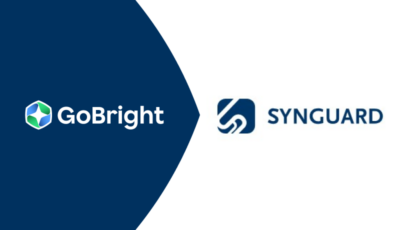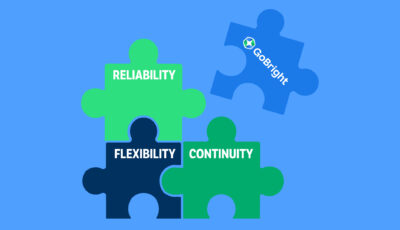In the dynamic landscape of today’s workplaces, the driving force behind sustainable success often lies in having an engaged and motivated workforce. Unfortunately, according to a Gallup study, only 23% of employees globally feel involved and enthused at work. To ensure success in your business, we’re here to share what we’ve learned through years of experience, research, and practical know-how.
So, what’s employee engagement? It’s not just about liking your job – it’s a mix of being excited, dedicated, and feeling connected to your work and your workplace. And guess what? Engaged employees can make a big difference in how well your company does. Employee engagement correlates closely with company culture and recognition and is important for the morale and employee retention within the company.
We’re here to break down the details, using simple and proven methods. As you read on, you’ll discover practical ideas and strategies that can help you create a workplace where people actually want to be and want to contribute. We’re here to guide you on this journey, showing you the way to a workplace that’s full of teamwork, creativity, and happiness. So, let’s dive in and learn how to boost employee engagement, step by step.
Why is employee engagement important?
First things first: why is having engaged employees so important? There are a variety of benefits to having engaged employees. For starters, an engaged employee is more productive. In fact, studies show a 14% increase in productivity when employees feel engaged at work. Engaged employees are more likely to go the extra mile, and are driven by a sense of ownership and commitment, leading to increased productivity, improved efficiency, and enhanced overall performance.
Additionally, studies show that organisations that prioritise employee engagement, experience lower employee turnover rates. Employees that are engaged and connected to their roles, are less likely to be actively looking for new job opportunities, reducing the costs and disruptions associated with recruitment, training, and onboarding of new staff.
Another important benefit that comes with an engaged workforce is a positive organisational culture. Engaged employees contribute to a positive and supportive working environment where teamwork and a shared sense of purpose thrive. While also creating a more pleasant working environment for your current employees, this also attracts and eventually retains new talent.
What drives employee engagement?
That employee engagement is important to any business, is evident. So how do you improve it in your business? Here are the six top drivers of employee engagement:
Effective leadership and management
There has never been a truer cliché: “Employees don’t quit their jobs, they quit their bosses.”. A study from 2019 found that 57% of employees resigned their jobs because of their manager. This shows that effective leadership and management is a cornerstone of employee engagement. Supportive and empowering leaders, who provide clear direction, communicate openly, are active listeners, and genuinely care about their team’s growth and well-being. They create an environment of trust, motivation, inclusivity and empowerment. Good managers recognise and equip their employees’ strengths, promoting a sense of accomplishment and engagement.
Recognition and feedback
When an organisation acknowledges their employees’ behaviour, effort, and accomplishments, it leads to a feeling of recognition for the employee. It gives them a feeling of pride and ownership, and connects them to the organisation, motivating them to work just as hard (if not harder!) on their next project. Constructive feedback, with the keyword constructive, helps employees understand their strengths and areas for improvement, which promotes a mindset focused on growth.
Trust and autonomy
Another important aspect to creating employee engagement is trust. Having a bond of trust between employees and employers allows for better communication, and a better social cohesion. It is vital to have a working environment in which everybody can be themselves and where everybody’s opinion is heard, whether they be employee or employer. This trust can be created by empowering employees with autonomy and involving them in decision-making processes. After all, when individuals have a say in their work and feel trusted enough to make meaningful choices, they become more engaged and accountable.
Well-being
Besides an employee’s connection with their job role, it is also important to keep an eye out on the employee’s overall well-being. Studies have shown that workers with a high engagement and a low overall well-being are 61% more likely to experience a burn-out. This can be prevented by stimulating a healthy work-life balance. Organisations that prioritise employee well-being, offer flexibility, and encourage a healthy separation between work and personal life demonstrate their commitment to their employees’ personal needs. A good example of activities to ensure your employees’ physical well-being, is by organising common sport activities, or providing employees with a company fitness budget. But don’t forget that their mental health is equally important: Make sure you create a working environment in which employees receive the time, space, and help to deal with any personal issues they may be facing.
Fair compensation and benefits
While we all would like to say that our employees work for the company out of sheer passion, this is usually only partially true. In the end, your employees work for you to earn a living and grow career-wise. Even though fair compensation and benefits are not the sole driver in employee engagement, they do play a crucial role. Feeling adequately rewarded for their contributions enhances job satisfaction and commitment to the organisation.
When people feel underpaid, they are likely to lose interest, motivation, and engagement. And it’s not always just about salary: you can also show recognition for your team’s efforts by showing thoughtful actions, such as a present for birthdays, a spontaneous bouquet of flowers as a thank you, and small gift for holidays and anniversaries. Or reward your employees for their hard work with the possibility of taking up extra vacation days or working from a remote location. In short: Strike up a conversation with your employees to understand what it is that would make them happy.
Opportunities for Growth and Development
And on that note, we conclude with the last driver for employee engagement. Employees are more engaged in the workplace when they see a path for personal development and continuous learning. Providing opportunities for skill development, training, and promotions not only improves individual capabilities, but also benefits the company as a whole and signals that your organisation is invested in everybody’s future.












